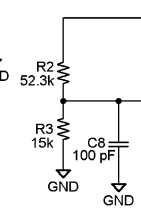Dear TI,
This is Brian and Mahmoud have tried to help to settle the design review.
The design specifications: 38A 3V3
RT=21k5,
Slop setup = 66K5 330pF,
L= 2.2uH 31Asat 2mRdc,
Rsense=4mR.
CBulk=100uF * 6, (25mR / 6)
After the review the design is printed and SMT to test the efficiency.
Before the efficiency test the converter is undergo a series of issues.
I am listing out the situation in order to settle once and for all.
Issues 1)
The converter cannot regulate to the targeted output voltage aka the feedback node is unable to reach 0.8V.
Mahmoud suggest to measure the node between SW, Gate PWM etc.
After forwarding the waveforms Mahmoud suggest it is in a hiccup mode and possible cause is the output capacitor is reversed.
After checking indeed 1 out of 6 capacitor have a reversed polarity and after replace with a NEW capacitor the issue is not settle but kept.
Based on the above situation the quickstart spreadsheet is forwarded to review and see there is any possible calculation fault.
Meanwhile the board files and schematic is also passed out again to check there are any possible overlook and fault.
Among the efforts on all those checking and review the issue is not found and should work in theory.
In order to resolve all possible causes a new set of components and board is printed and assemble.
Issue 2:
With a new batch of board the testing is repeated and yet no regulation is happening.
Mahmoud suggest to remove the feedback loop and tested with a external voltage to test the function of the converter IC itself.
So the setup is committed and output voltage to the feedback resistor is break and supplied by a Linear Power Supply (LPS).
With the compensation components are replaced to a simple resistor (12K).
The converter is able to adjust the PWM pulse from zero to highest. (not the duty cycle but the pulse appeared frequency).
Without Mahmoud feedback I desired to replaced back the loop to close and remove soft-start capacitor.
After removing the Css CH1+CH2 the converter is able to regulate but drop significantly along the load current.
No Load 3.3V, 1A 2.8V, 3A 2.4V.
Please TI help and settle the current situation.
Bests,
Brian



